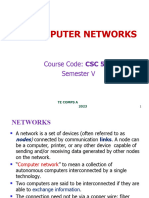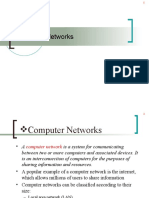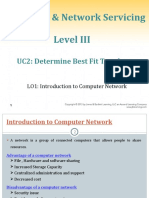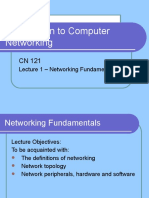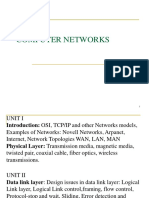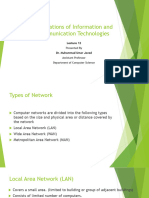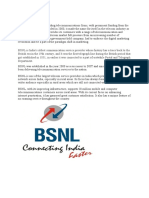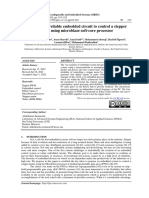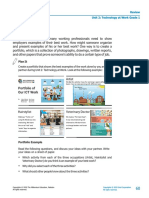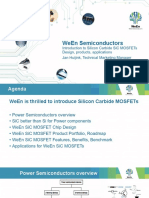0% found this document useful (0 votes)
137 views47 pagesChapter Two: Introduction To Computer Networks
This document provides an introduction to computer networks, including:
1) It defines a computer network as a collection of autonomous computers interconnected by a single technology that allows them to exchange information.
2) It outlines several types of computer networks based on size, including personal area networks (PANs), local area networks (LANs), metropolitan area networks (MANs), wide area networks (WANs), and the Internet.
3) It describes common network topologies like bus, star, ring, and their advantages and disadvantages. The star topology is highlighted as being easy to install and manage but requiring more cable, while the bus topology can fail if the backbone is broken.
Uploaded by
Nikodimos EndeshawCopyright
© © All Rights Reserved
We take content rights seriously. If you suspect this is your content, claim it here.
Available Formats
Download as PPTX, PDF, TXT or read online on Scribd
0% found this document useful (0 votes)
137 views47 pagesChapter Two: Introduction To Computer Networks
This document provides an introduction to computer networks, including:
1) It defines a computer network as a collection of autonomous computers interconnected by a single technology that allows them to exchange information.
2) It outlines several types of computer networks based on size, including personal area networks (PANs), local area networks (LANs), metropolitan area networks (MANs), wide area networks (WANs), and the Internet.
3) It describes common network topologies like bus, star, ring, and their advantages and disadvantages. The star topology is highlighted as being easy to install and manage but requiring more cable, while the bus topology can fail if the backbone is broken.
Uploaded by
Nikodimos EndeshawCopyright
© © All Rights Reserved
We take content rights seriously. If you suspect this is your content, claim it here.
Available Formats
Download as PPTX, PDF, TXT or read online on Scribd
/ 47












